Last updated on February 10th, 2022
The achievements of one of the greatest boxers, Muhammad Ali, are not just confined to the ring, but extend beyond considerable lengths and breadths of the planet. He lead his life with confidence, conviction, and dedication, and even after his passing away, he is remembered by millions across the world. With these 57 facts about Muhammad Ali, we try to recollect his childhood, adulthood, boxing career, and the work he did for his fellow human being.
1. Son of Cassius Marcellus Clay Sr. and Odessa Grady Clay, childhood Cassius Clay (Muhammad Ali) was born on 17 January 1942, in Louisville, Kentucky, United States. He was an American professional boxer, philanthropist, entertainer, and activist. Famous for his boxing prowess, he was later nicknamed “The Greatest.”
2. His mother was a domestic helper and his father was a billboard painter. Despite the fact that Cassius Senior was a Methodist, he permitted his wife to bring up Cassius Jr. and his younger brother, Rudolph Clay as Baptists. Cassius Clay, a dyslexic, went to Central High School in Louisville.
3. Because of his medical condition, he faced problems in reading and writing in school and much for the rest of his life. Cassius and his family grew up in the midst of racial discrimination. There was an occasion when a storekeeper denied him a drink of water because of his color.
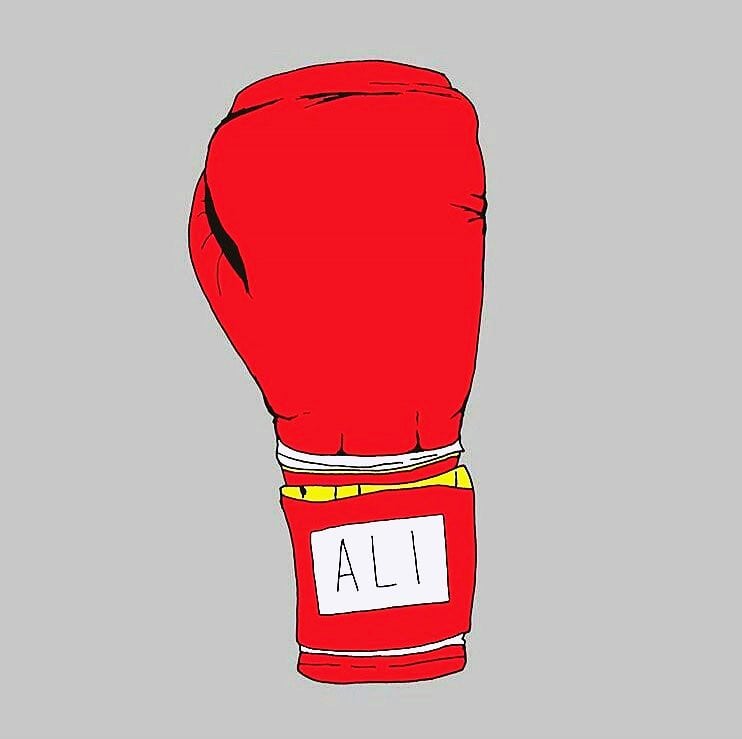
4. He started boxing at the tender age of 12 in a random manner. After someone stole his bike, a tearful clay told a police officer, Joe Martin, that he wanted to pummel the culprit. The officer advised him to learn how to fight, and took the young kid under his wing.
5. The police officer (Joe Martin) was a boxing trainer at a local gym and used to teach people how to box. Cassius started visiting the gym and picked up the basics of boxing. It was not long before he started to compete and six weeks later won his first bout in a split decision.
6. Clay had captured two national Amateur Athletic Union titles, two national Golden Glove titles, and 100 victories against eight losses by the time he was 18. He traveled to Rome after graduating high school, and won the light heavyweight gold medal in the Summer Olympics of 1960.
7. On October 29, 1960, Clay won his professional boxing debut in a six-round decision. The 6′ 3″ heavyweight boxer, overwhelmed his opponents from the start of his pro career. His opponents were overwhelmed by his combination of foot speed along with a combination of quick and powerful jabs.
8. On February 25, 1964, Clay received his first title shot against Sonny Liston, the then reigning heavyweight champion. Prior to this he won his first 19 fights, which included 15 knockouts. Clay kept on taunting Liston during the fight, and even went to the extent of predicting a knockout.
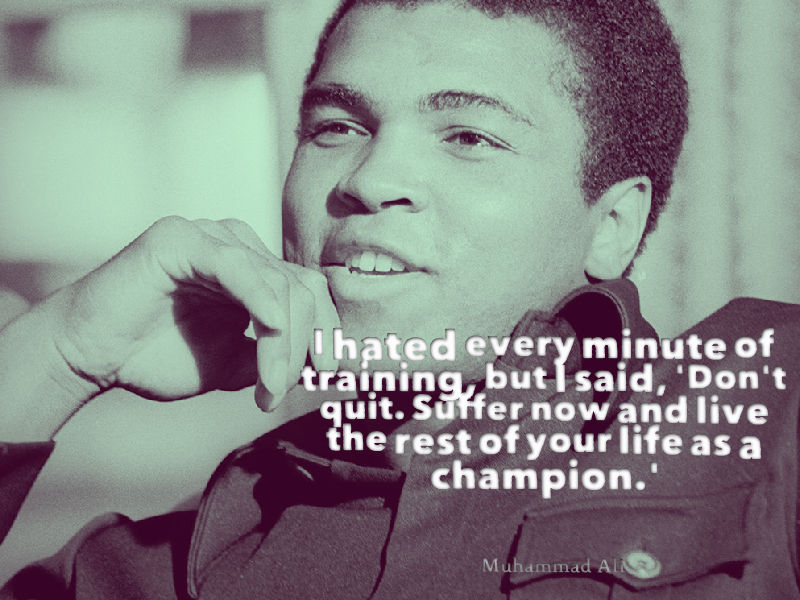
9. While entering the ring he promised to “float like a butterfly and sting like a bee.” At the start of the seventh round, Liston failed to answer the bell. Consequently, Clay was crowned world boxing heavyweight champion. Following his victory he roared at the crowd “I am the greatest.”
10. In 1964 he changed his name to Muhammad Ali after joining the Nation of Islam. As a result, he rejected induction in the military, stating that he would not enlist because of his religious beliefs. He was stripped of his heavyweight boxing title because of this and received a three-year ban from boxing.
11. The rumors that Clay had converted to Islam were confirmed at a press conference the next morning. For quite some time Clay was seen around Miami with Malcolm X, a member of the controversial Nation of Islam. Ejijah Muhammad (his spiritual mentor) bestowed the name of Muhammed Ali on March 6, 1964.
12. Ali played his first match against Floyd Patterson on 22 November, 1965 for the WBC/Ring/lineal world heavyweight championship. They played the second match for the North American Boxing Federation on 20 September 1972. Ali won both fights on technical knockouts.
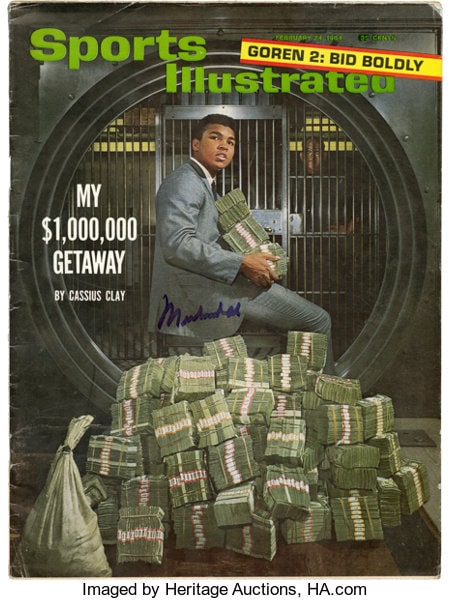
13. Following the Patterson fight, Ali formed his own promotion company — Main Bout. The company handled the boxer’s pay per view closed circuit broadcasts as well as handled Ali’s boxing promotions. Mainly fellow Nation of Islam members were its stockholders.
14. By knocking out Sonny in the first round of their rematch on 25 May 1965, Ali solidified his hold on the heavyweight championship.
15. Ali refused to serve, citing his religious beliefs. He was later arrested. Following this, the New York State Athletic Commission revoked his heavyweight belt as well as suspended his boxing license. Ali was not perturbed by this decision.
16. Convicted of evasion of draft, Ali was imposed with a fine of $10,000 and to the maximum of five years in prison. Nevertheless, Ali remained free while the conviction was being appealed. He spoke out against the Vietnam War on college campuses after being banned from boxing for three years.
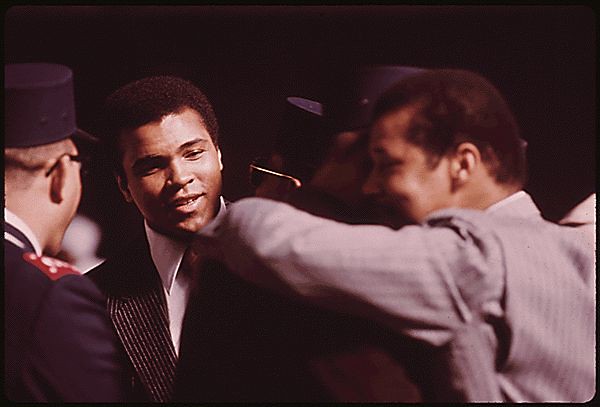
17. Ali’s popularity plummeted and many saw him as a draft dodger. However, support for Ali grew as public attitudes turned against the war. The New York State Supreme Court ordered the reinstatement of his boxing license in the year 1970.
18. Ali returned to the ring on October 26, 1970, after spending 43 months in exile, and knocked out Jerry Quarry in the third round. The opportunity for Ali to regain his heavyweight crown against Joe Frazier, the reigning champion came on 8 March, 1971.
19. In what was billed as the “Fight of the Century” Ali was floored by the then undefeated Frazier in the final round. Although Ali got up, he lost in a unanimous decision, and experienced his first defeat as a pro.
20. Unperturbed, Ali won the next ten bouts before being defeated by Ken Norton. Six months later he won the rematch in a split decision as well as gained additional revenge in a unanimous decision over Frazier in a non-title match.
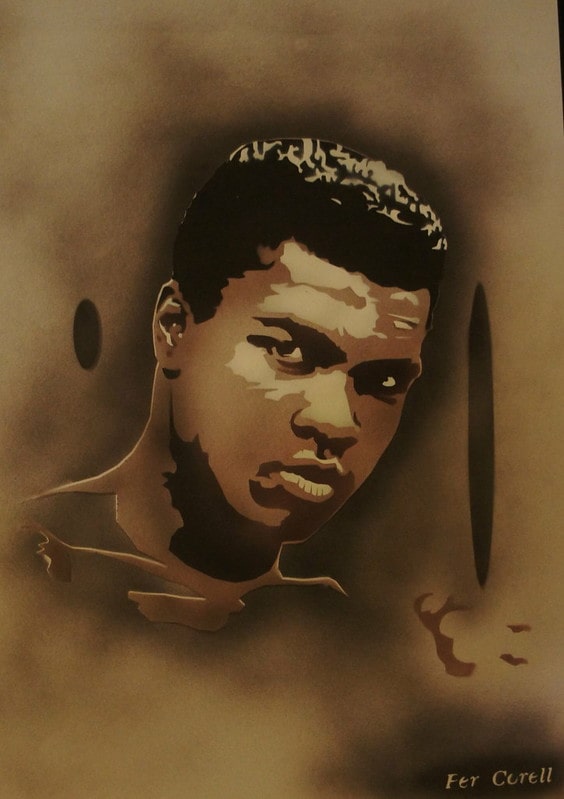
21. Thanks to this victory, Ali was provided an opportunity to take on champion George Foreman. The match held in Kinshasa, Zaire on 30 October, 1974 allowed Ali to employ his special strategy to wear out his opponent.
22. During the fight Ali would lean on the ropes of the ring, all the while absorbing a bombardment of blows from the fist of Foreman while taking his sweet time for his opponent to get tired. The strategy was successful and Ali won in the 8th round knockout. He regained the title stripped from him seven years ago.
23. Ali faced no problems defending his title in the next 10 bouts, which included the unforgettable “Thrilla in Manila” on 1 October, 1975. In this bout, Frazier, Ali’s bitter rival, was unable to answer the bell for the final round.
24. An ageing Ali lost his title to Leon Spinks in a 15 round split decision. The match was held on the 15th of February, 1978. Ali defeated Spinks seven months later to reclaim his heavyweight crown.

25. Following his victory against Spinks, Ali became the first boxer to win the world heavyweight boxing titles three times. Ali launched a brief, albeit unsuccessful comeback after announcing his retirement in 1979. Unfortunately, he was overcome in a technical KO loss to Larry Holmes in 1980.
26. On 11 December, 1981, he dropped a unanimous 10 round fight to Trevor Berbick. The 39 year old Ali retired for good after this fight with a career record of 37 Kos and 56 wins. His body was bruised and battered and he could fight no more.
27. Photographer Howard Bingham was Ali’s best friend for 35 years. During this period he traveled the globe, meeting presidents and princes. He would not have been able to do so were it not for his selfless devotion to his buddy, Muhammad Ali.
28. Some of his other close friends include Alicia Keys, Denzel Washington, Howard Bingham, Magic Johnson, Heidi Klum, Madonna, Will Smith, Angela Jolie, Brad Pitt, Elton John, Lenny Kravitz, Billy Crystal, Tom Cruise, Jada Pinkett Smith, Halle Berry, and many more.
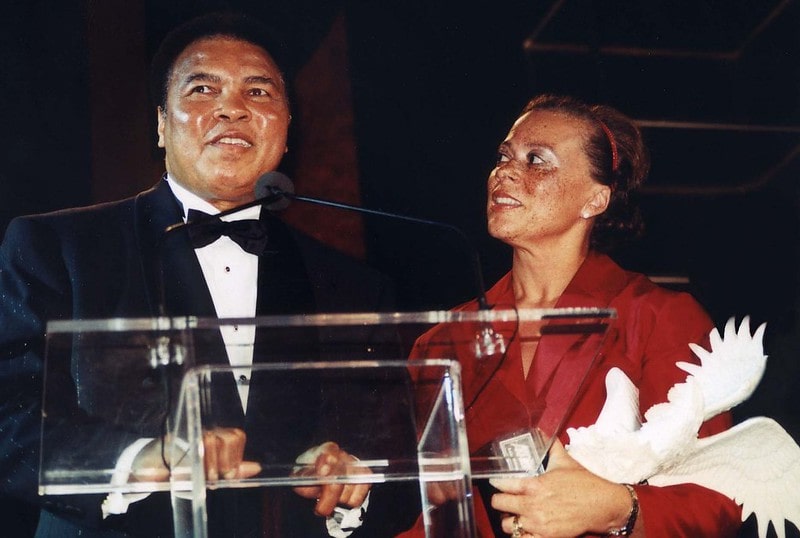
29. Ali has been married four times and has seven daughters and two sons. His four wives include Sonji Roi ( m. 1964; div. 1966), Belinda Boyd (m. 1967; div. 1977), Veronica Porche Ali (m. 1977; div. 1986), and Yolanda Williams (m. 1986) — the latter being his last wife.
30. Ali, whose height was 1.91 meters and who had a reach of 198 centimeters had nine children. They are Laila, Maryum, Asaad, Rasheda, Hana, Jamillah, Miya, Khaliah, and Muhammad Ali Jr. He also had a brother, Rahman Ali.
31. Apart from being a boxing champion, Muhammad Ali was also a champion of equality, justice, and peace. His life fighting in or out of the box epitomizes an icon that people love to emulate and use as a role model. Apart from being quick to admit his mistake he reminded us the need to stay humble.
32. Ali was a leader by character. He lived by working, living, and leading in alignment with his core principles, purpose, values, and beliefs. The lifeline of life is guided by values. Ali lived his values of compassion, justice, and fairness by refusing to go to Vietnam to fight for the U.S.
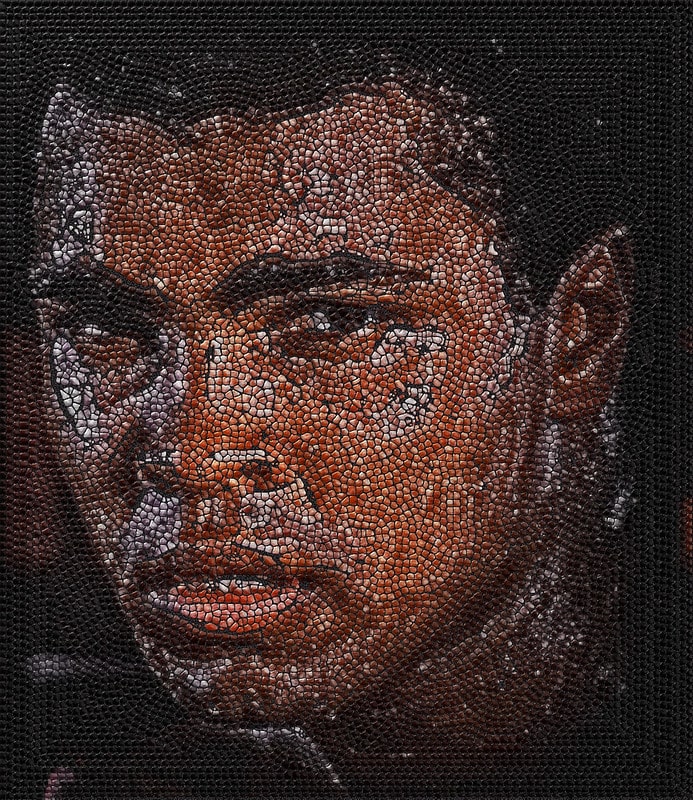
33. Life was not a bouquet of roses for Ali. Apart from serving five years in prison, he began showing signs of slurred speech and slowness when he was in his mid-30s. Later on, he was diagnosed with Parkinson’s syndrome ate the age of 42.
34. With 716.4 points, BoxRec ranks Ali as the fourteen greatest boxer, pound for pound of all time. During his professional career, he is the highest ranked fighter to have only faced heavyweights. The Ring (a boxing magazine) ranked him number 1 in a ranking of the greatest heavyweights from all eras.
35. Ali remained in public spotlight, despite suffering from Parkinson’s. He traveled the world to spread goodwill, and make humanitarian and charitable appearances.
36. Few people know that Ali met Iraqi leader, Saddam Hussain in the year 1990 to negotiate the release of American hostages.
37. During the opening ceremonies of the 1996 Atlanta Summer Olympics, Ali had the honor of lighting the cauldron. BBC voted Ali as the “Sporting Personality of the Century” in 1999.

38. In a 2005 White House ceremony, Ali was awarded the Presidential Medal of Freedom. The same year saw the opening of the $60 million Muhammad Ali Center. This cultural center and nonprofit museum focuses on social responsibility and peace. It was opened in Louisville.
39. Muhammad Ali was declared by Ring Magazine as “the Fighter of the Year” on five occasions. This figure is much more than any other boxer has received. In 1990 he was inducted into the International Boxing Hall of Fame.
40. Despite his money and popularity, he remained a humble, religious and down to earth person. He was the first one to come out and donate money for a worthy cause. This fact alone speaks volumes about his character.
41. Thanks to his popularity, several movies were made about Ali including: A.K.A. Cassius Clay, I am Ali, Ali: An American Hero, The Greatest and many more. See the table at the end of the article for more information.
42. Ali was also a famous philanthropist, an individual who uses their money to help the public. Apart from supporting the “make a wish” foundation as well as the Special Olympics, he also founded his own organization, the Muhammad Ali Parkinson Center.
43. Muhammad Ali relished hot buttered rolls, spinach, macaroni and cheese, green peas, baked chicken, and dressing.
44. Many people believe that Ali would have lived a normal life and would not have suffered from Parkinson’s disease had he not taken to boxing. However, the legend states that the punches he took during his boxing career had nothing to do with his case of Parkinson’s disease.
. . . continue reading on the next page
